This Fruit's Nothing to Sniff At!
I have a son and several neighbors who have, as part of their landscaping, a crab apple tree. Every year the fruit falls to the ground, messing up lawns and sidewalks. And every year the tree is cursed because of the mess it makes.
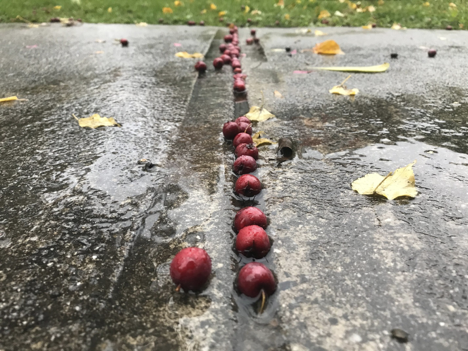
So I’ve been wondering… are there any uses for the crabapple beyond small projectiles and a rumor I once heard about jelly?
This fruit is often the root stock upon which our more popular apple varieties are grafted. The crabapple lends more vulnerable apple varieties its strength and vigor, protecting them from all manner of insects and parasitic attack.
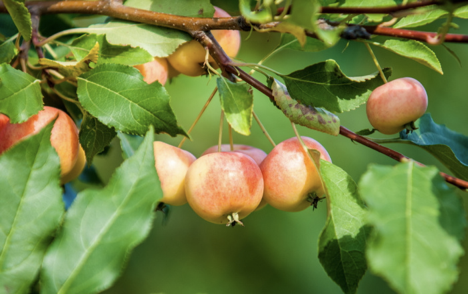
While a crabapple is no Fuji, Jazzy, or Pink Lady, it’s certainly nothing to sniff at. In other words, these folks with crabapple woes might want to take another look at this abundant crop because it does have lots of uses and benefits.
First of all this little fruit is high in vitamins A and C and the minerals iron and calcium. There is actually very little difference between the Red Delicious and your average crabapple except that crabapples are more tart and they’re much smaller than the Red Delicious (less than 2 inches in diameter).
Crabapple is also a good source of malic and tartaric acid. These acids, which lend the fruit its sour flavor, are responsible for the apple’s healing reputation. Historically, the crabapple has been used for gout, indigestion, inflammation, constipation, and fever.
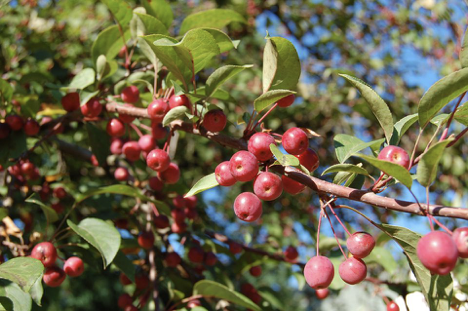
And they’re high in pectin. This means that if you do want to make crabapple jelly, all you need is the fruit, sugar, and spices! And by the way, research shows that pectin (aka fruit fiber) helps stabilize blood sugar, protects against colon cancer, and even lowers cholesterol.
They’re versatile little things, working well in just about any apple recipe where you would opt for Granny Smith or any other tart apple…and they tend to be easier to grow! So the next time you find yourself stepping over them, bend down and pick some up. The owner of the tree will likely thank you.
Speaking of versatile, you can more things with them than make jelly. For instance, any basic bread pudding recipe will benefit from chunks of tart apple — try this version, sweetened with maple syrup.
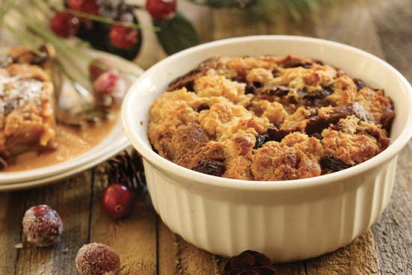
1/2 baguette, or loaf of good-quality crusty bread, or an assortment of bread ends (raisin bread works well here)
4 large eggs
1/2 cup pure maple syrup or raw honey
1/4 cup packed brown sugar
2 cups half and half
1 teaspoon vanilla extract
1 shake cinnamon
2 tablespoons softened butter
10 to 15 crabapples, sliced or quartered; stems and seeds removed
2 tablespoons sugar
Directions:
Add Recipe to Cook'n
And besides jelly and bread pudding, you can also pickle them. You need whole crabapples (stemmed), red vinegar, apple cider vinegar, a lemon, a little tarragon, apple juice, sugar, salt pepper, and a couple fresh bay leaves. All ingredients are placed in a pot and brought to a boil (being careful not to over-cook them to mush). The apples are allowed to cool in their liquid.
The last step is a labor of love—quite time-consuming, but worth it. The cores are removed apple by apple. Then they’re returned to their poaching liquid until you are ready to serve.
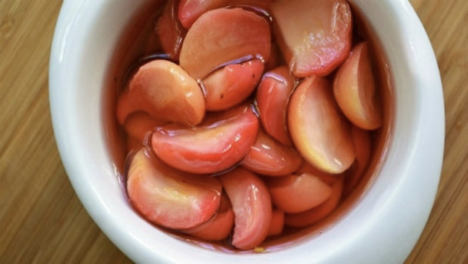
Crabapples also make very good tarte tatin. This is an upside down apple tart consisting of pastry baked over slices of fruit arranged in caramelized sugar, served fruit side up after cooking. Because they can be overly sweet due to the caramelized sugar, the crabapple is perfect for this dessert. It’s tartness nicely balances things out.
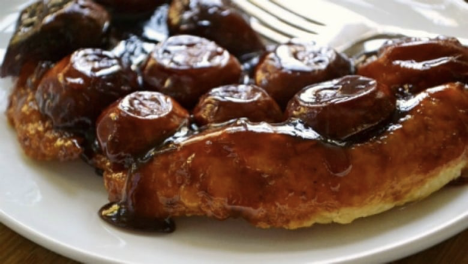
And they make a delicious apple syrup. When refrigerated, it will last up to several months. I like to remove the stems and seeds and puree the apples in my Vitamix with some added apple juice. Then I add 1 cup of sugar for every cup of puree. I whisk the sugar and this thick juice together over medium heat, until the sugar is completely dissolved. Once it’s reached a boil, the heat is reduced to a simmer. This mixture is cooked for 5 minutes, and then removed from the heat and allowed to cool. The cooled syrup is poured into bottles or canning jars and processed for 20 to 25 minutes (depending on the size jars being used).
Lastly, as alluded to above, you can make your own pectin with this fruit. The cores and seeds of crabapples are naturally very high in pectin. So if all you want is some natural pectin, then simmer two pounds of crabapples with three cups of water for about 30 minutes, then mash and strain. The result can be used just like store bought liquid pectin for setting up any kind of fruit jelly or jam.
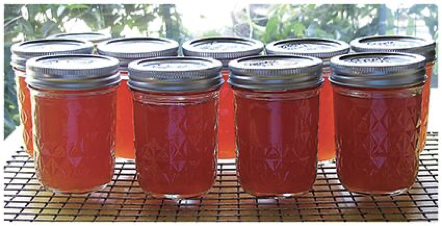

So I’ve been wondering… are there any uses for the crabapple beyond small projectiles and a rumor I once heard about jelly?
This fruit is often the root stock upon which our more popular apple varieties are grafted. The crabapple lends more vulnerable apple varieties its strength and vigor, protecting them from all manner of insects and parasitic attack.

While a crabapple is no Fuji, Jazzy, or Pink Lady, it’s certainly nothing to sniff at. In other words, these folks with crabapple woes might want to take another look at this abundant crop because it does have lots of uses and benefits.
First of all this little fruit is high in vitamins A and C and the minerals iron and calcium. There is actually very little difference between the Red Delicious and your average crabapple except that crabapples are more tart and they’re much smaller than the Red Delicious (less than 2 inches in diameter).
Crabapple is also a good source of malic and tartaric acid. These acids, which lend the fruit its sour flavor, are responsible for the apple’s healing reputation. Historically, the crabapple has been used for gout, indigestion, inflammation, constipation, and fever.

And they’re high in pectin. This means that if you do want to make crabapple jelly, all you need is the fruit, sugar, and spices! And by the way, research shows that pectin (aka fruit fiber) helps stabilize blood sugar, protects against colon cancer, and even lowers cholesterol.
They’re versatile little things, working well in just about any apple recipe where you would opt for Granny Smith or any other tart apple…and they tend to be easier to grow! So the next time you find yourself stepping over them, bend down and pick some up. The owner of the tree will likely thank you.
Speaking of versatile, you can more things with them than make jelly. For instance, any basic bread pudding recipe will benefit from chunks of tart apple — try this version, sweetened with maple syrup.

Crabapple, Cinnamon, Bread Pudding
Serving size: 6
Calories per serving: 285
Ingredients:
Calories per serving: 285
1/2 baguette, or loaf of good-quality crusty bread, or an assortment of bread ends (raisin bread works well here)
4 large eggs
1/2 cup pure maple syrup or raw honey
1/4 cup packed brown sugar
2 cups half and half
1 teaspoon vanilla extract
1 shake cinnamon
2 tablespoons softened butter
10 to 15 crabapples, sliced or quartered; stems and seeds removed
2 tablespoons sugar
Directions:
1. Cut or tear the bread into one-inch chunks into a large bowl.
2. In another bowl, whisk together the eggs, maple syrup, brown sugar, cream and vanilla.
3. Pour over the bread and let sit for an hour or overnight, stirring or turning the mixture once in a while. All liquid should be well absorbed, but the bread shouldn’t turn to mush.
4. Preheat oven to 400°F.
5. Pour bread mixture into a buttered baking dish.
6. In a small skillet, the butter over medium-high heat and cook the crabapples for a few minutes until they start to soften.
7. Sprinkle with sugar and cook until they start turning golden. Stir the apples into the bread mixture or sprinkle over top.
8. Bake 45 minutes to an hour, until puffed and golden. Serve warm, with whipped cream if you like.
2. In another bowl, whisk together the eggs, maple syrup, brown sugar, cream and vanilla.
3. Pour over the bread and let sit for an hour or overnight, stirring or turning the mixture once in a while. All liquid should be well absorbed, but the bread shouldn’t turn to mush.
4. Preheat oven to 400°F.
5. Pour bread mixture into a buttered baking dish.
6. In a small skillet, the butter over medium-high heat and cook the crabapples for a few minutes until they start to soften.
7. Sprinkle with sugar and cook until they start turning golden. Stir the apples into the bread mixture or sprinkle over top.
8. Bake 45 minutes to an hour, until puffed and golden. Serve warm, with whipped cream if you like.
Recipe formatted with the Cook'n Recipe Software from DVO Enterprises.
And besides jelly and bread pudding, you can also pickle them. You need whole crabapples (stemmed), red vinegar, apple cider vinegar, a lemon, a little tarragon, apple juice, sugar, salt pepper, and a couple fresh bay leaves. All ingredients are placed in a pot and brought to a boil (being careful not to over-cook them to mush). The apples are allowed to cool in their liquid.
The last step is a labor of love—quite time-consuming, but worth it. The cores are removed apple by apple. Then they’re returned to their poaching liquid until you are ready to serve.

Crabapples also make very good tarte tatin. This is an upside down apple tart consisting of pastry baked over slices of fruit arranged in caramelized sugar, served fruit side up after cooking. Because they can be overly sweet due to the caramelized sugar, the crabapple is perfect for this dessert. It’s tartness nicely balances things out.

And they make a delicious apple syrup. When refrigerated, it will last up to several months. I like to remove the stems and seeds and puree the apples in my Vitamix with some added apple juice. Then I add 1 cup of sugar for every cup of puree. I whisk the sugar and this thick juice together over medium heat, until the sugar is completely dissolved. Once it’s reached a boil, the heat is reduced to a simmer. This mixture is cooked for 5 minutes, and then removed from the heat and allowed to cool. The cooled syrup is poured into bottles or canning jars and processed for 20 to 25 minutes (depending on the size jars being used).
Lastly, as alluded to above, you can make your own pectin with this fruit. The cores and seeds of crabapples are naturally very high in pectin. So if all you want is some natural pectin, then simmer two pounds of crabapples with three cups of water for about 30 minutes, then mash and strain. The result can be used just like store bought liquid pectin for setting up any kind of fruit jelly or jam.

Sources:
- www.burlingtonfreepress.com
- www.foodstoragemoms.com
- www.thespruceeats.com
- www.grit.com
- www.cbc.ca
- www.backwoodshome.com
 Alice Osborne
Alice Osborne
Weekly Newsletter Contributor since 2006
Email the author! alice@dvo.com
